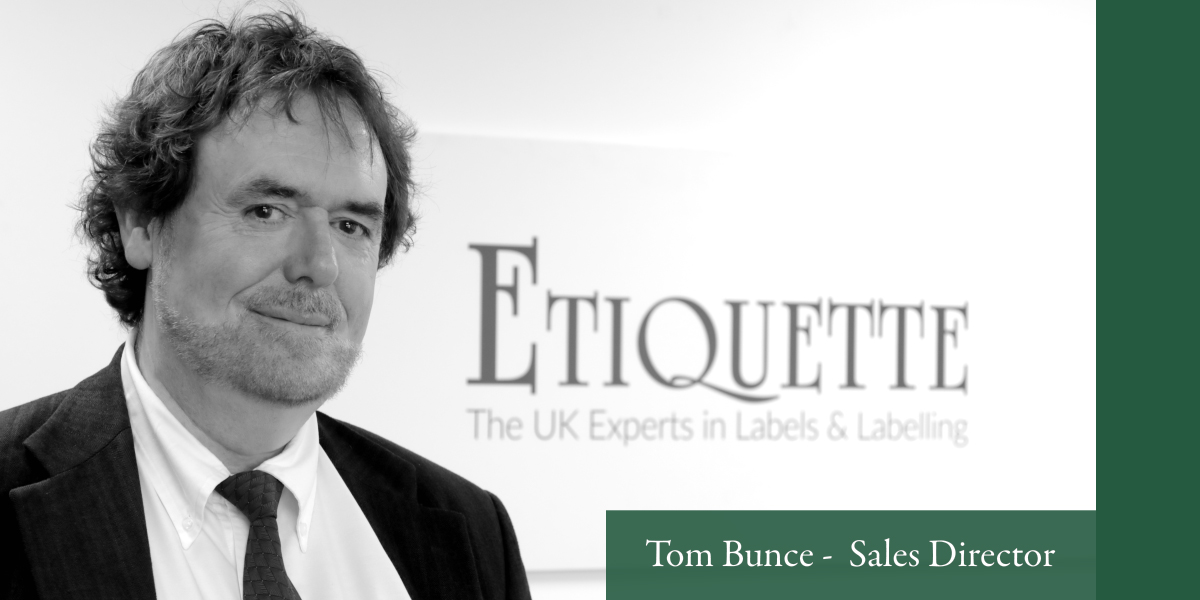
We sat down for a quick chat with our Sales Director, Tom Bunce to find out about how Etiquette came into being, what makes us a great company to work with and what the future holds!
Etiquette is now 27 years old. Tell us about how it all began and what attracted you to the Labelling Industry.
It was more by accident than design, as it often the case. I have been involved in the Packaging Industry for most of my working life, and during the late 80s I was involved in the rapidly evolving market for print and apply labelling equipment for the outer-case barcode labelling required by the major retailers. As a consequence, I was getting enquiries for the labels and thermal transfer ribbons. I discussed this opportunity with my co-director Christiane who had many years experience in the production of self-adhesive labels; and we invested in our first label press.
What separates Etiquette from other Label Manufacturers?
Quite simply, we have embraced all areas of self-adhesive labelling, and offer solutions for plain and printed labels in a huge range of substrates, thermal transfer ribbons, label application and print and apply equipment, label design software and barcode printing and verification equipment.
What is the most pleasing aspect of your role at Etiquette?
I’m at my best when I’m talking about new projects with customers. I thoroughly enjoy getting involved in their projects and seeing them through to completion.
Over the years, what projects have you worked on that have really stood out? Any particular printed labels or machinery applications?
20 years ago, when Power Rangers and The Gladiators were on TV, we produced labels for pick and mix cheeses for Woolworth’s, featuring all the characters. It was an exciting project, as the images were bold and fun. Regarding the machinery, one of the most memorable projects was the introduction of the first high speed twin-head auto-switching labelling lines for soft drinks at 180 packs per minute! 3 per second!
How has print changed since you started working in the industry?
When I first started, the benchmark for label printing was Letterpress, which required solid plates. Over the years, flexography has improved and evolved such that Letterpress is virtually defunct, if indeed it still exists at all. Flexographic printing used to be the ‘budget’ end of the market, and used for large character printing on cardboard cartons etc. It has moved from solvent based inks, through water based inks with hot air drying, to UV curable inks. Concurrent with that has been the introduction of digital ink jet printing, which is ideal for short runs using the CMYK process set, as it requires no printing plates.
What is the best piece of advice you’ve ever received regarding industry?
Quite simply, to recruit key people who are smarter than me, and can come with fresh ideas.
What are your ambitions for the future at Etiquette?
I intend to help Etiquette continue to grow and evolve well into the next decade, providing a secure a stable business for all who depend upon it.